The last two seasons have been far from what Juventus fans expected from their star-studded club. In 2019/20 Maurizio Sarri took charge of Juventus, winning a Serie A title in his one season at the helm. However, a failure to win the Champions League and an alleged lack of chemistry between the manager and his players led to his dismissal. Andrea Pirlo’s sole season in charge in the 2020/21 campaign was far more disappointing, for a number of reasons. The disappointing campaign led to Juventus barely sneaking into the Champions League, requiring a win on the last day of the season and a slip up from Napoli to squeeze into the top four. His Coppa Italiana wasn’t enough to save his job and the Juventus legend departed with little fanfare.
This sequence of events has led Juventus back to where they started. Massimiliano Allegri.
He hasn’t managed since leaving The Old Lady at the end of the 2018/19 season and it won’t have gone unnoticed that, given Juventus’ desire to win the Champions League, as well as now regain the Scudetto, they have returned to a manager who was a serial winner with them. Allegri won five straight Scudettos in his time at Juventus, as well as four Coppa Italiana’s and two SuperCoppa Italianas. More importantly, he took Juventus to the Champions League final twice, even if he couldn’t get them past the finishing line and take home the trophy. Juve will be expecting him to quell the rise of Inter, as well as their city rivals AC Milan, and rise above the chasing pack of Atalanta, Napoli, Lazio, Roma et al. But they will also be expecting to get back to the Champions League Final once more, and gift Juventus their first title in this competition since 1996.
This tactical analysis will give an insight into some of the key tactics Allegri used in his previous stint with Juventus.
Formations
Allegri has a flexible approach to formations, frequently shifting between a number of different set ups. In his last season with Juventus he minimally preferred a 4-3-3 over others. However, he used a 3-5-2, 4-4-2 and 4-4-1-1 almost as frequently throughout his time. He shifts between using a single or double pivot, but this greatly depends on the players at his disposal. It is perhaps unsurprising given Allegri’s reappointment to see Juve heavily linked with a move once again for Miralem Pjanic. The Bosnian midfielder played an influential role in Allegri’s midfield, often operating as a single pivot.
The following image shows Juve’s most frequently used formations in Allegri’s last season in charge.
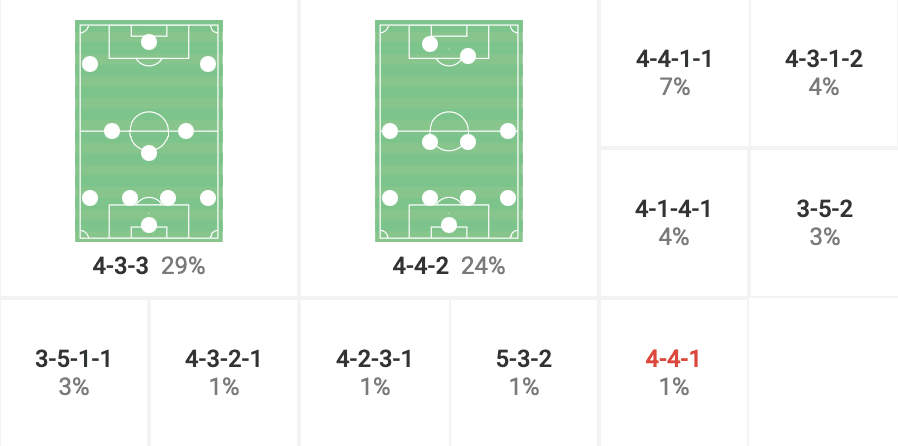
There is potential that he could initially opt to use a 4-4-2 given that was heavily Juve’s preferred formation under Pirlo and it may lead to an easier transition. This would be in line with his decision to continue with the 3-5-2 for some time following Antonio Conte’s departure at the end of the 2013/14 season. However, their public chase of Pjanic would suggest Allegri has designs for a single pivot, and that would point towards him moving back to the 4-3-3.
Build-up phase
When building from the back, Allegri looks for his defence to stretch the pitch as much as possible. The full-backs offer a legitimate passing option, and will be frequently used as the centre-backs look to pass out, but they also leave space for a pivot to drop in between and gather possession themselves.
There are some variations to this. The pivot can drop and receive, or if marked tightly, a second pivot may drop in and receive the ball themselves.
Equally, the initial single pivot may look to draw the pressure into areas which will allow Juve to break the lines and play immediately into the front line.
Whilst Juventus would average large swathes of possession under Allegri, they were generally still a progressive side and looked to move the ball forward at pace when presented with the opportunity to do so.
Even against more aggressive presses, Allegri’s decision to play with a wide shape during build-up would allow Juve to stretch the opponent, before using simple up, back and through pass patterns to bypass a press. We can see this occurring in the analysis in the following image, as the ball-side pivot draws their marker forward before spinning behind to receive a short pass from the 10.
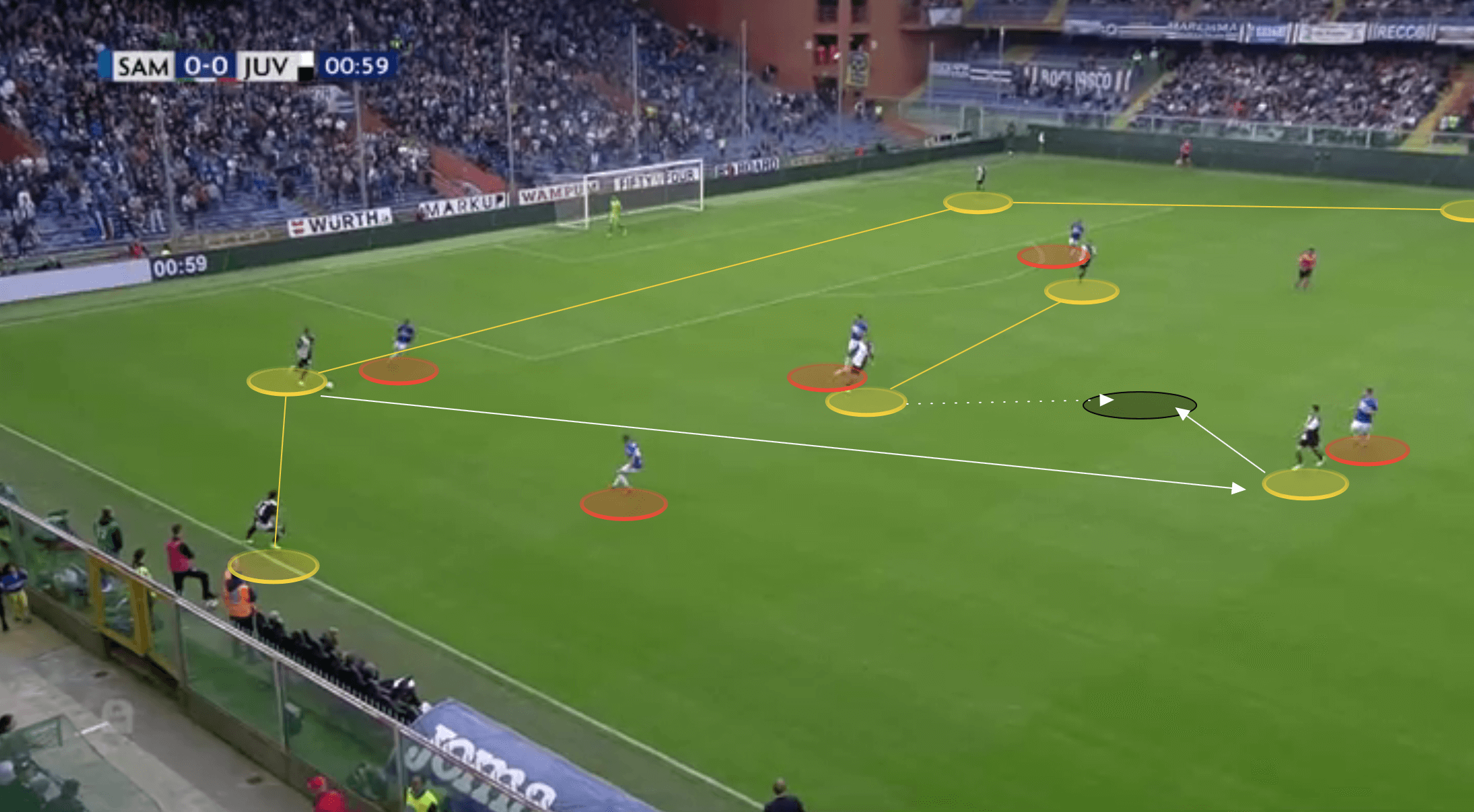
Allegri isn’t averse to his side being direct in possession either. In these instances there have to be at least two forwards close to one another, with the far-side of the two tasked with not only winning the header, but also taking both centre-backs out of the equation. In the next image, Chiellini plays a long ball forward with Moise Kean spinning off into the space around the other side of his strike partner, Mario Mandzukic.
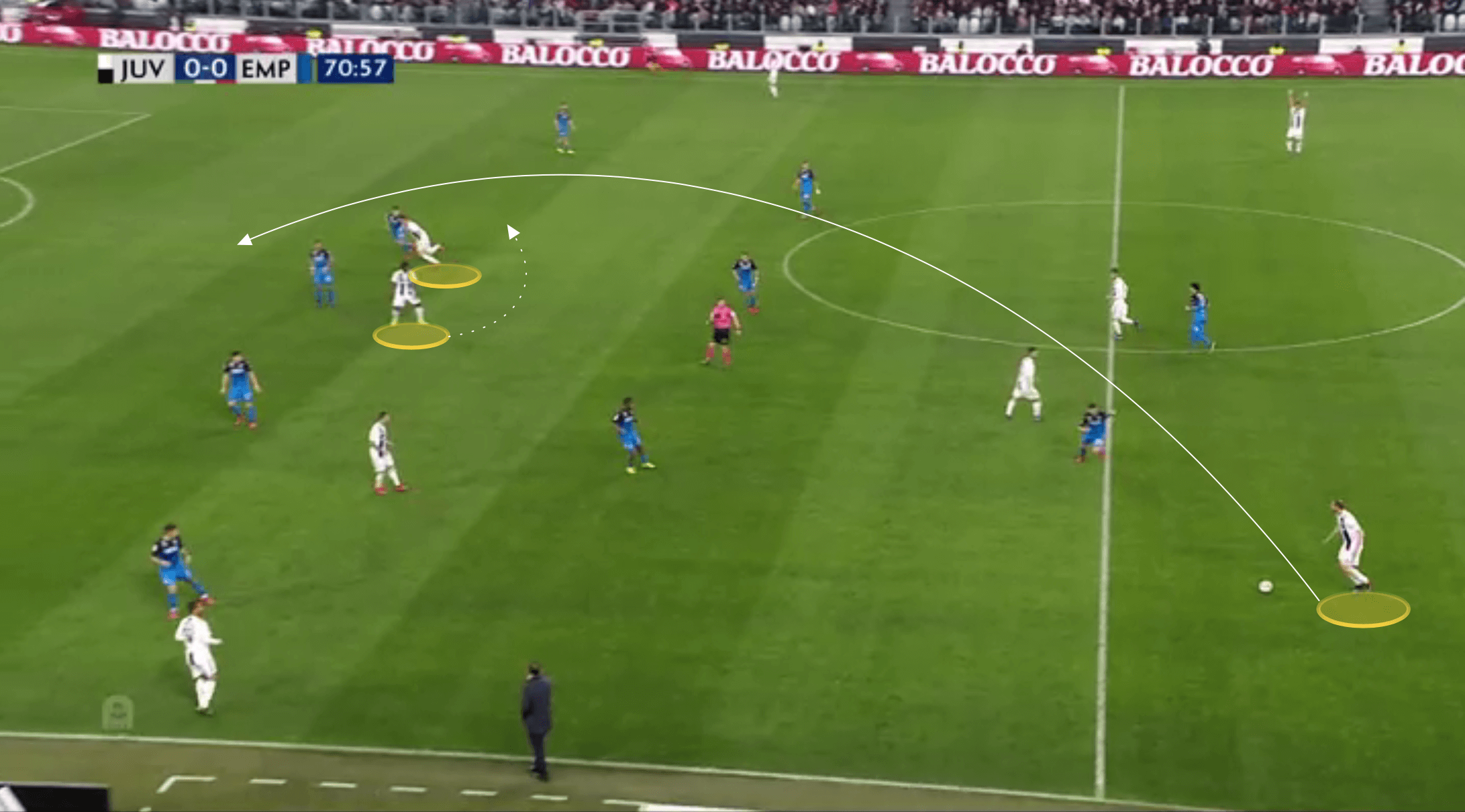
Mandzukic’s run drags his marker with him, and also engages the ball-side centre-back. He is able to knock the ball down to Kean who is now in space himself.
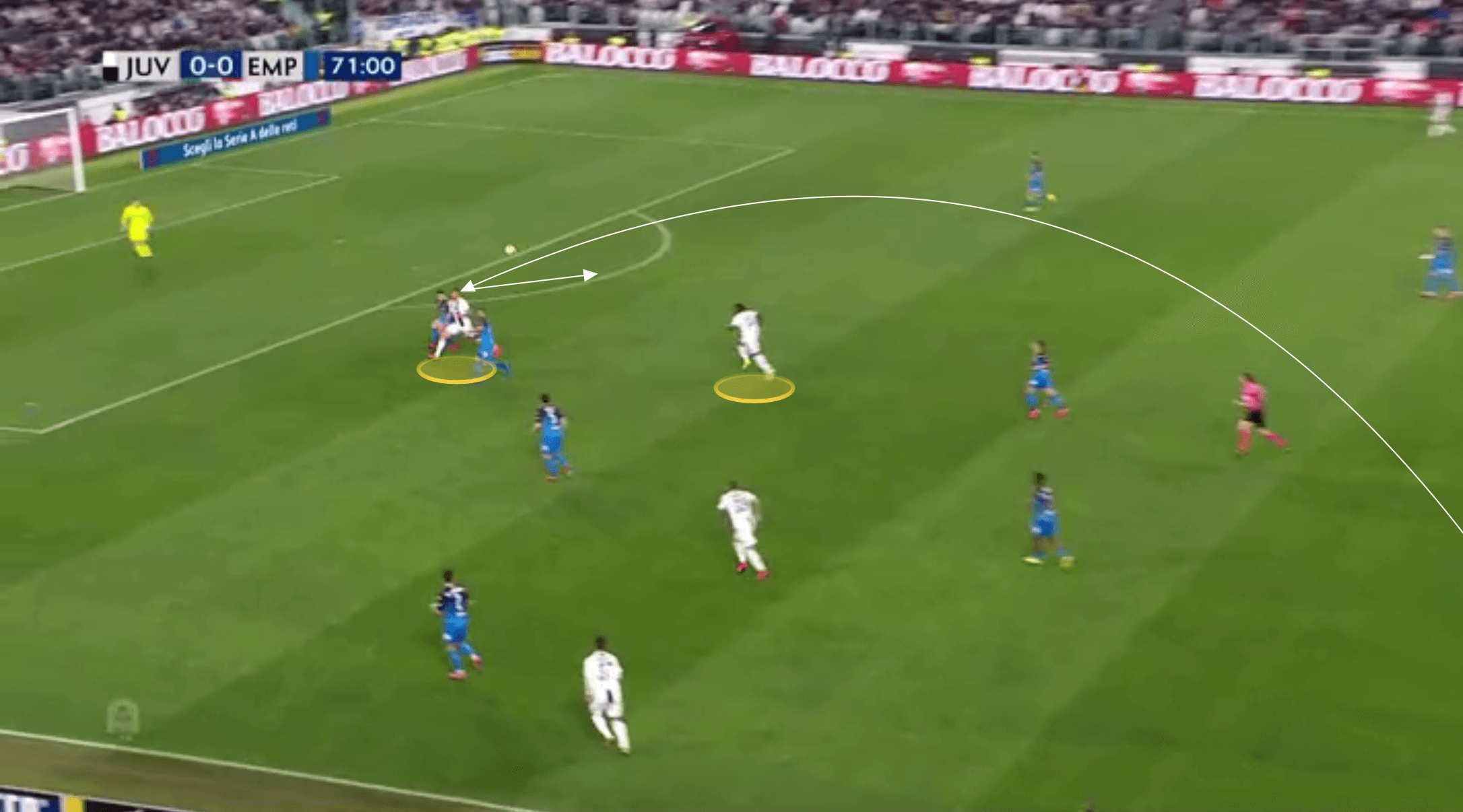
Just as with his pivot(s) using their positioning to drag players into areas of the pitch to create space for others, this principle is seen with the forward play too. This example shouldn’t give the impression an Allegri side is a long ball team – far from it – but they are ruthless in taking up chances to play forward, and are intelligent in creating space for players beyond the ball.
Using wide overloads to structure attacks
Allegri looks for his side to create overloads through rotational movement. He looks to have his full-backs push high and wide in the attacking phase, and subsequently allow his wingers to drift inside as they please, or play on the shoulder of the opposition full-back. He wants a third player to shift out wide and this can be a centre-forward or a central-midfielder. He gives freedom to his forwards to drop in to offer an option for the centre-backs to break the lines, whilst his central-midfielders can make third-man runs in behind the opposition back line in the half-space channel.
In the following image we can see Cristiano Ronaldo dropping into the half-space from his centre-forward position in order to receive a pass from his defence. Ronaldo is able to receive the ball in space with the pass bypassing the entirety of both team’s central midfielders.
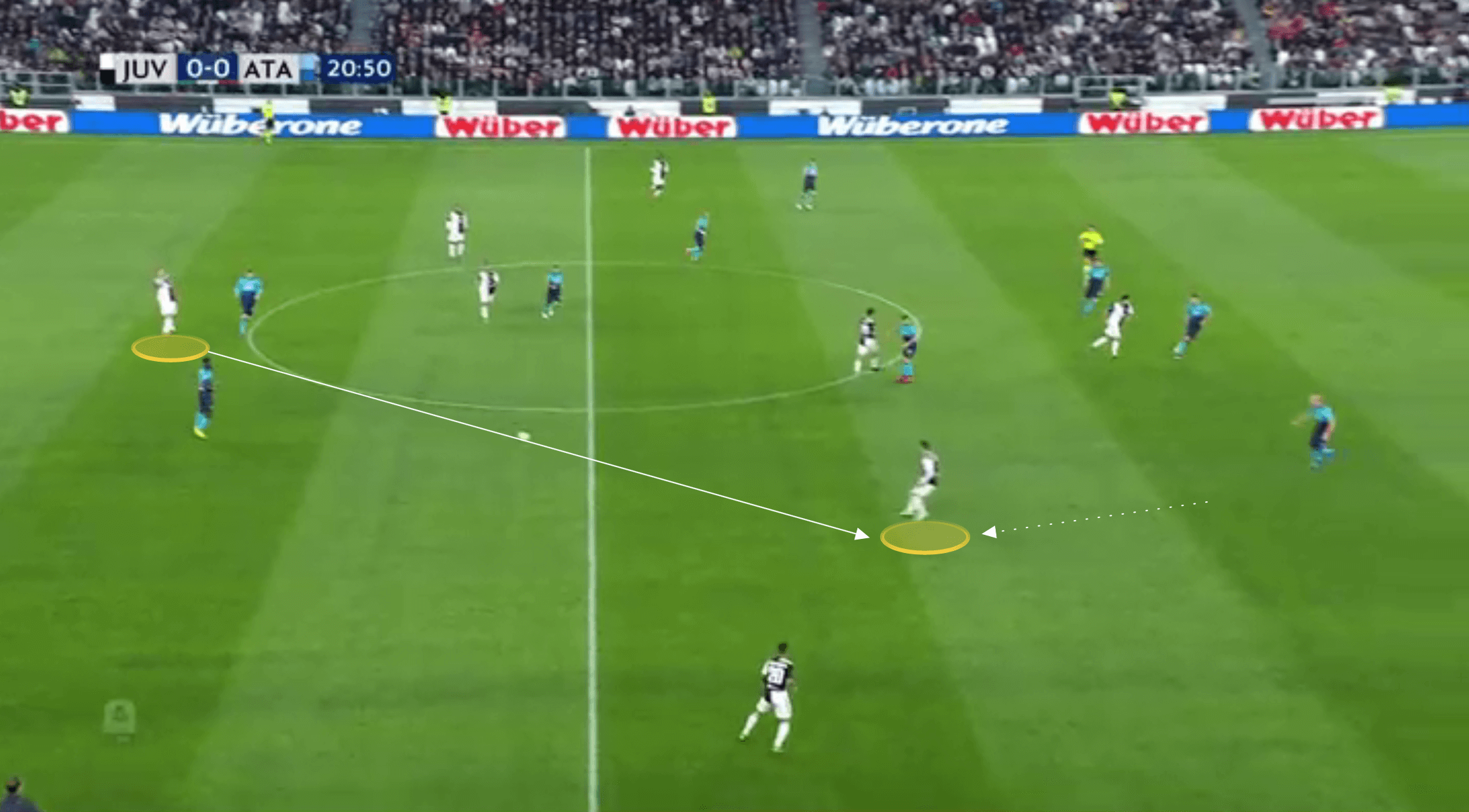
Moving the ball on quickly, Ronaldo (along with his right-back and right-winger), has created a simple 3v2 overload on the opposition full-back and centre-back. The ball-carrier is quick to engage the closest defender before moving the ball on.
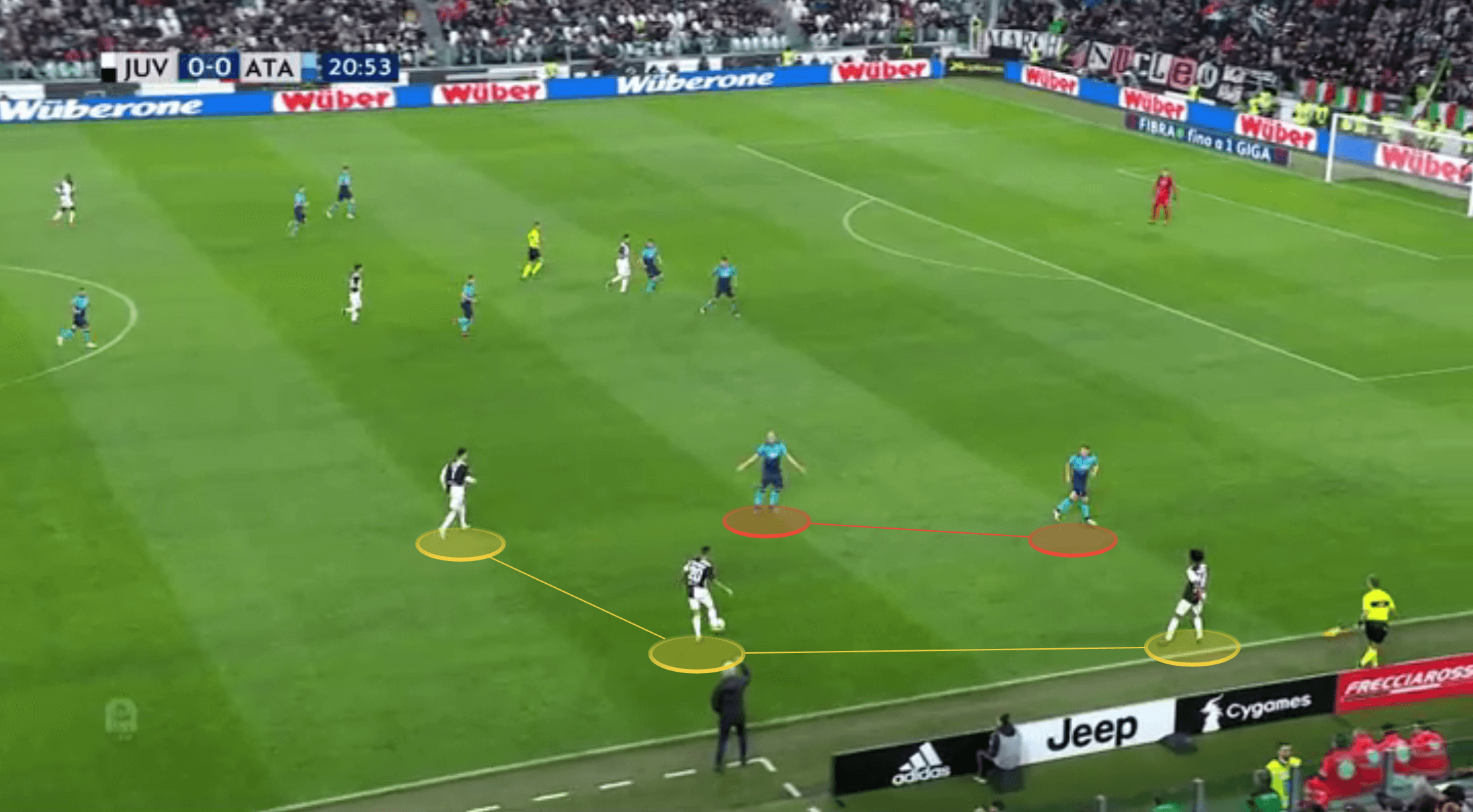
If a forward doesn’t drift into this space, then they are more likely to look to create space for a central-midfielder to create the overload. In the following image, Ronaldo is instead rooted in the centre of the pitch. As such there is a defined space between himself and the duo of right-winger Juan Cuadrado and right-back Joao Cancelo. Cuadrado’s deeper presence in this instance is enough to draw the opposition left-back forward, and this leaves space for Emre Can to make a run from midfield in behind.
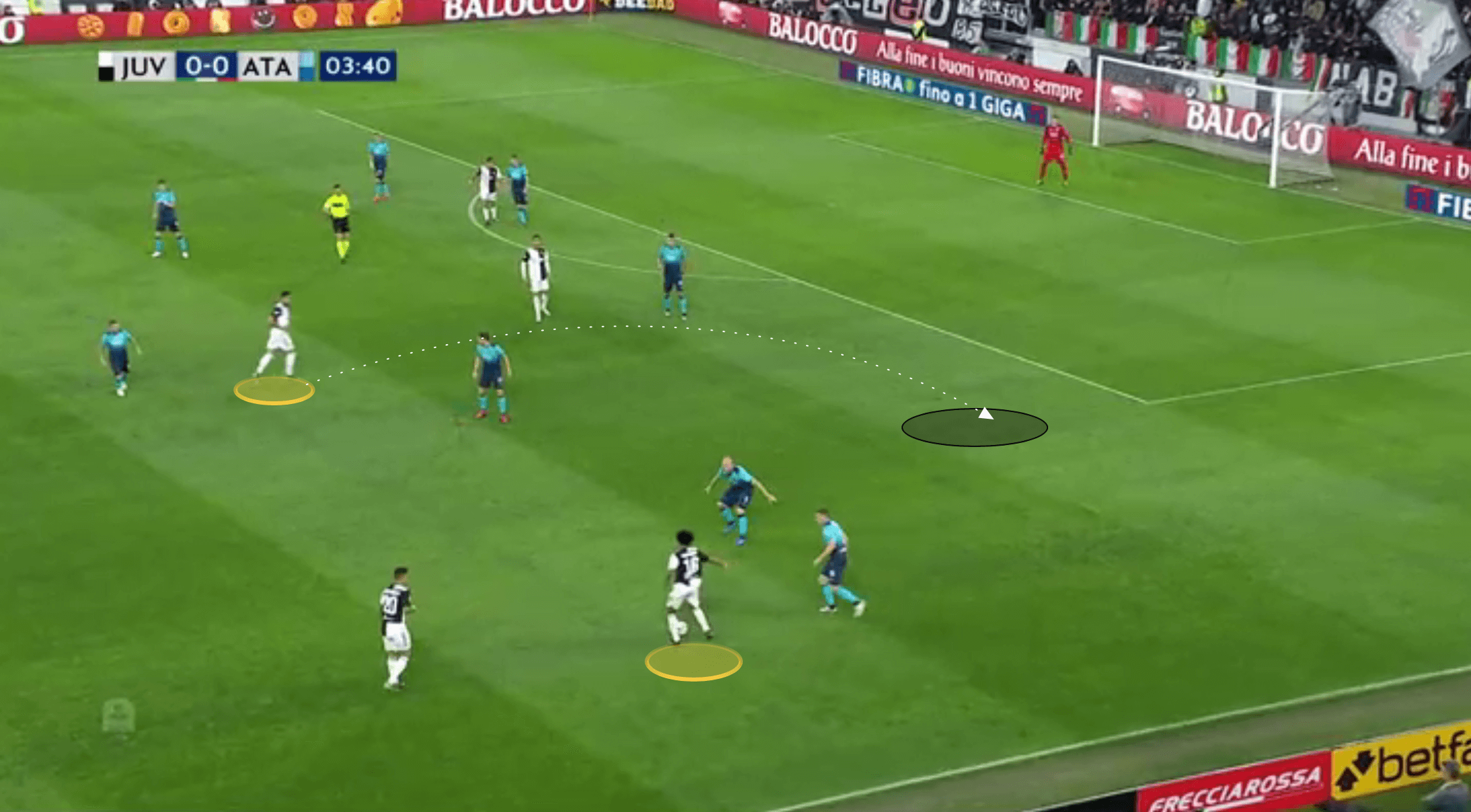
The initial positioning of the winger is key in drawing the full-back out to make these wide overloads so devastating. Allegri chooses to have his wingers take an initially narrow starting position, close to the opposition full-back in order to ensure they are engaged in marking the winger and can be effectively drawn forwards or wide.
As the ball is worked out wide, like in the next image, the winger will then shift out wide, with the opposition full-back going with them as they do this.
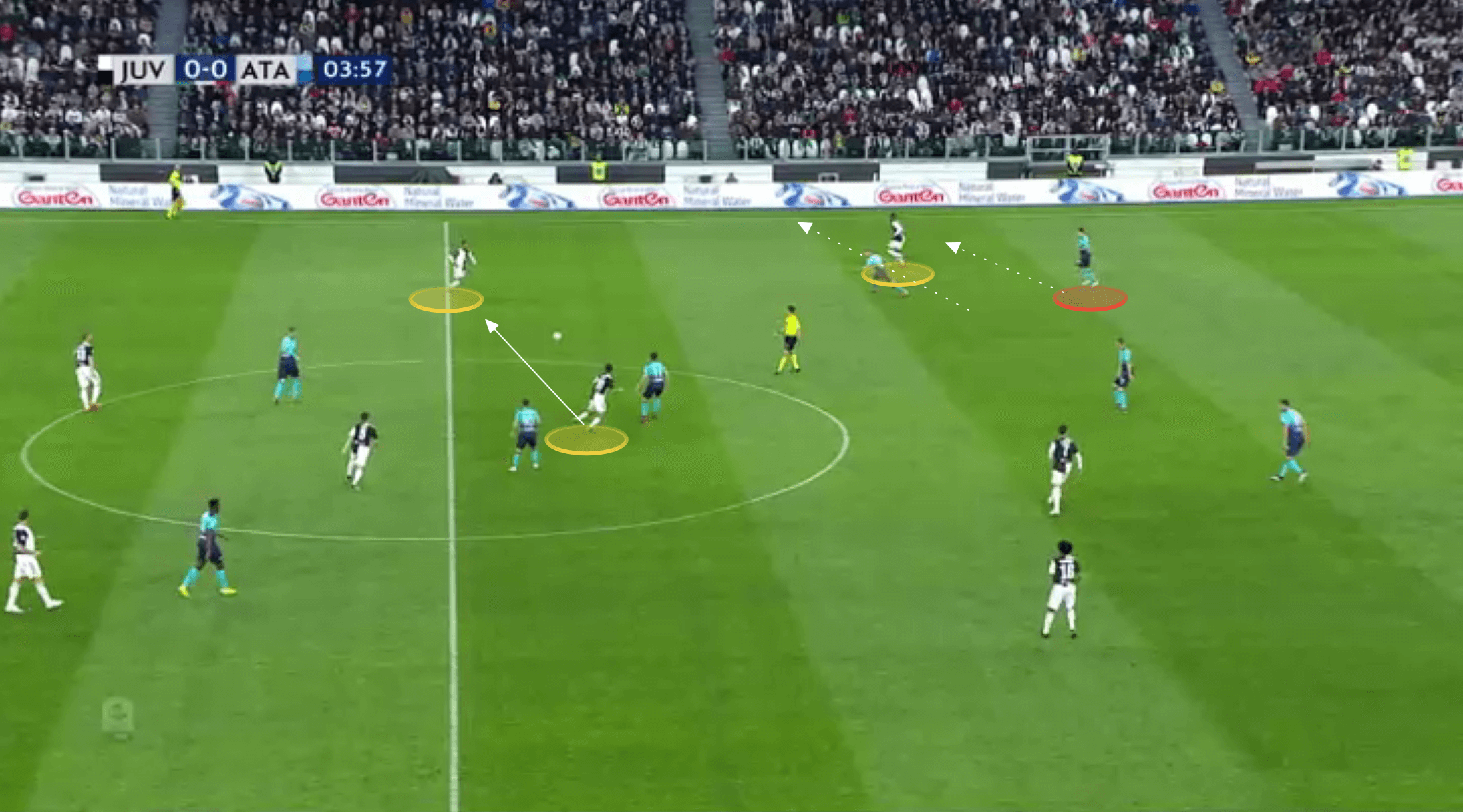
This can create space for a centre-forward or central-midfielder to shift into the half-space, or, as in the example shown, enough room for a fast full-back to overlap or underlap into the space behind the opposition full-back.
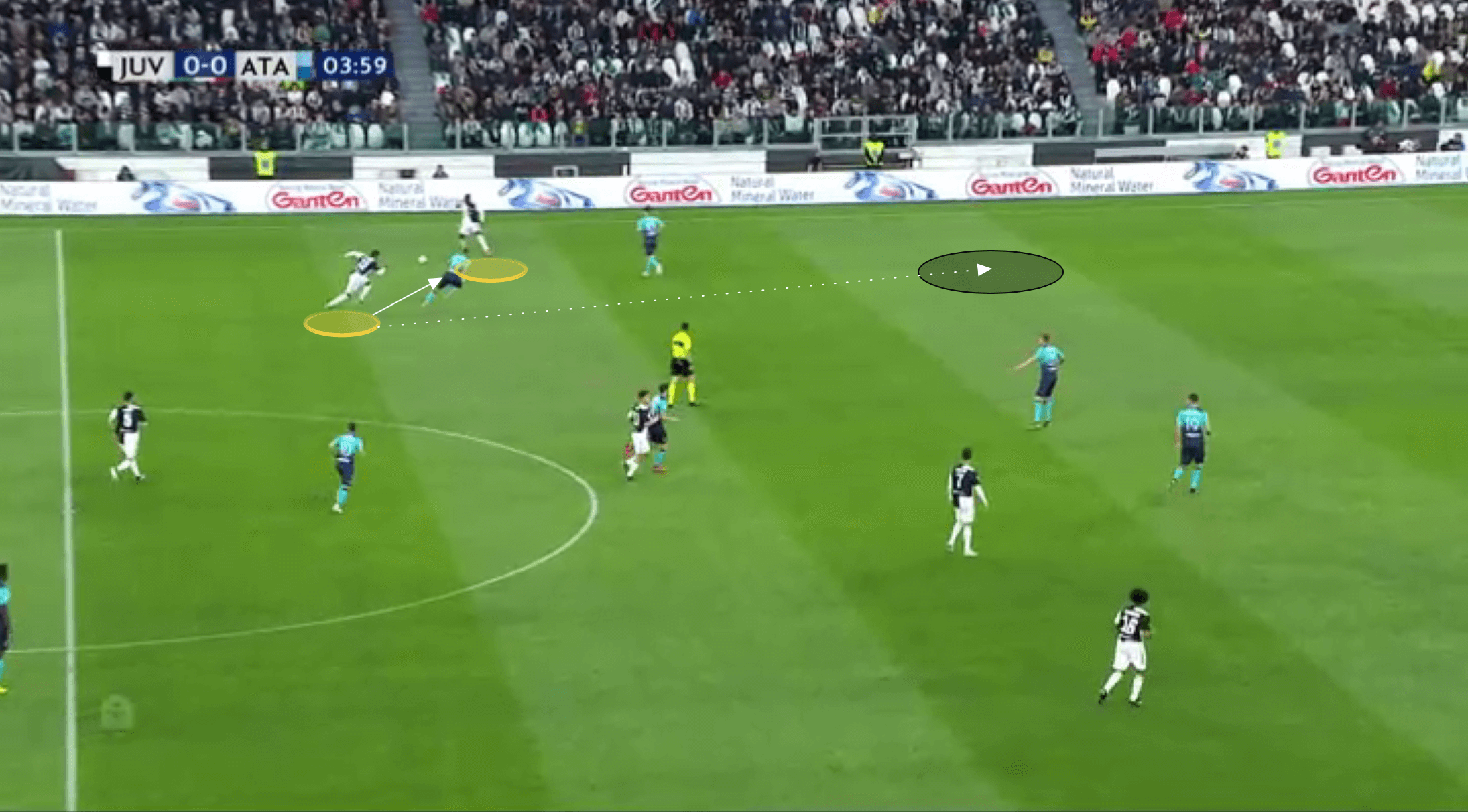
The winger and full-back rarely operate on the same lines and Allegri uses his wingers to offer a line-breaking pass option in the half-space during build-up play. As this occurs the full-back on that side, who was initially deep to offer an option for the centre-back in possession, immediately pushes high on the overlap.
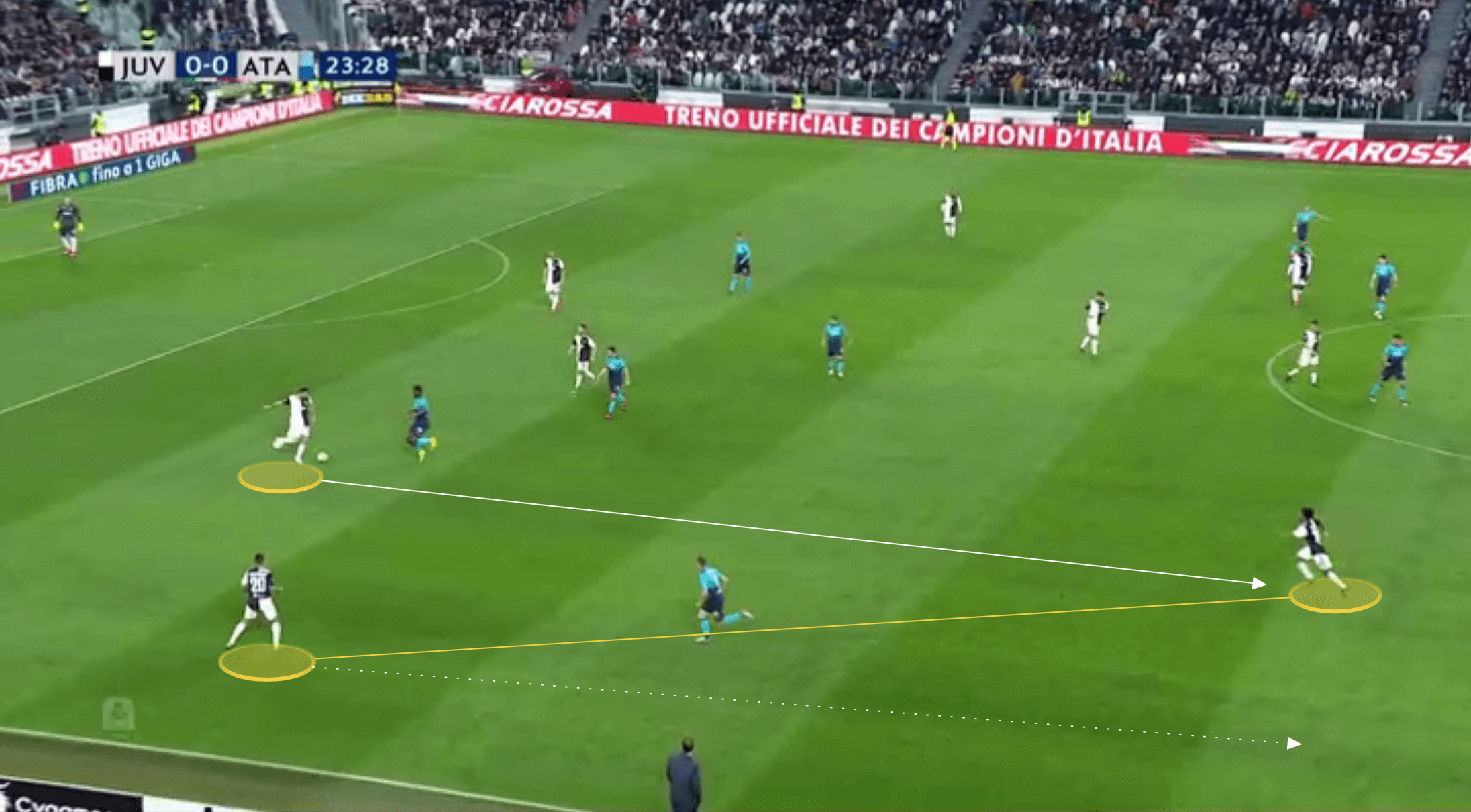
With the winger drawing out the opposition full-back with this run to receive possession, there is space on that flank for his own full-back to receive on the overlap. However, by moving inside, there are opportunities to structure an overload here too.
In the following example Cuadrado moves the ball inside into Ronaldo. As this occurs, one of the central-midfielders bursts forward and creates a 2v1 with Ronaldo on the highlighted centre-back.
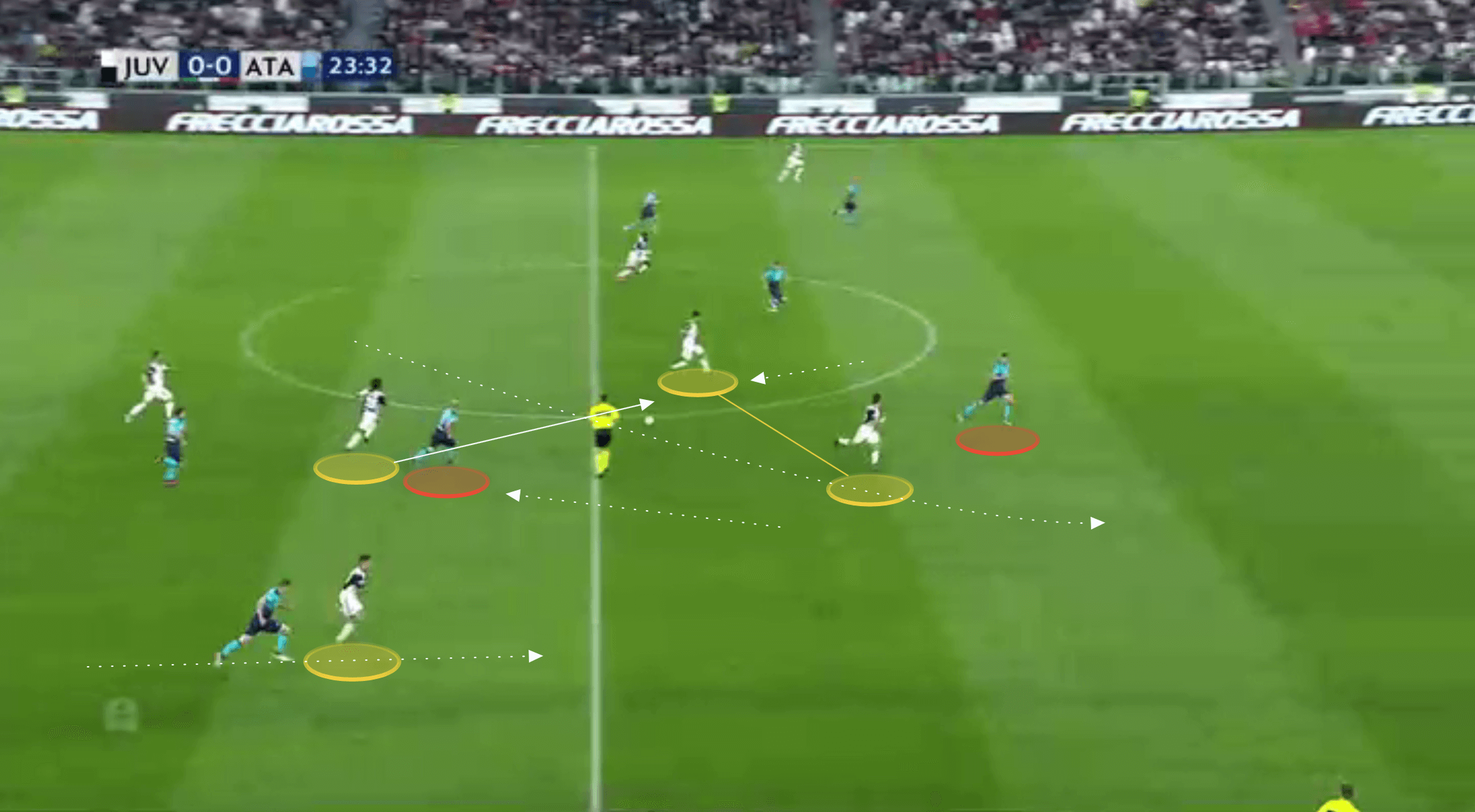
Pressing traps
Allegri looked to block wide passages for the opposition during their own build-up phase, and instead show the opponent inside. To do this he ensured there was always heavy coverage on the opposition full-backs and any press from his forwards on the opponents goalkeeper or centre-backs was angled to show them inside.
Allegri would pack the centre of the pitch and ensure he had an aerially dominant central-midfielder hanging back slightly ready to intercept any under-hit longer balls played forward.
Juve were disciplined in ensuring their shape wasn’t shifted from side to side and then broken down as it was stretched. Allegri was happy to commit players to one flank, but he didn’t want the ball to be subsequently circulated. His forwards would work aggressively to stop this from occurring and react quickly to curve their press as the ball was played laterally, instead showing the ball-carrier to play back inside, where Juventus had plenty of numbers.
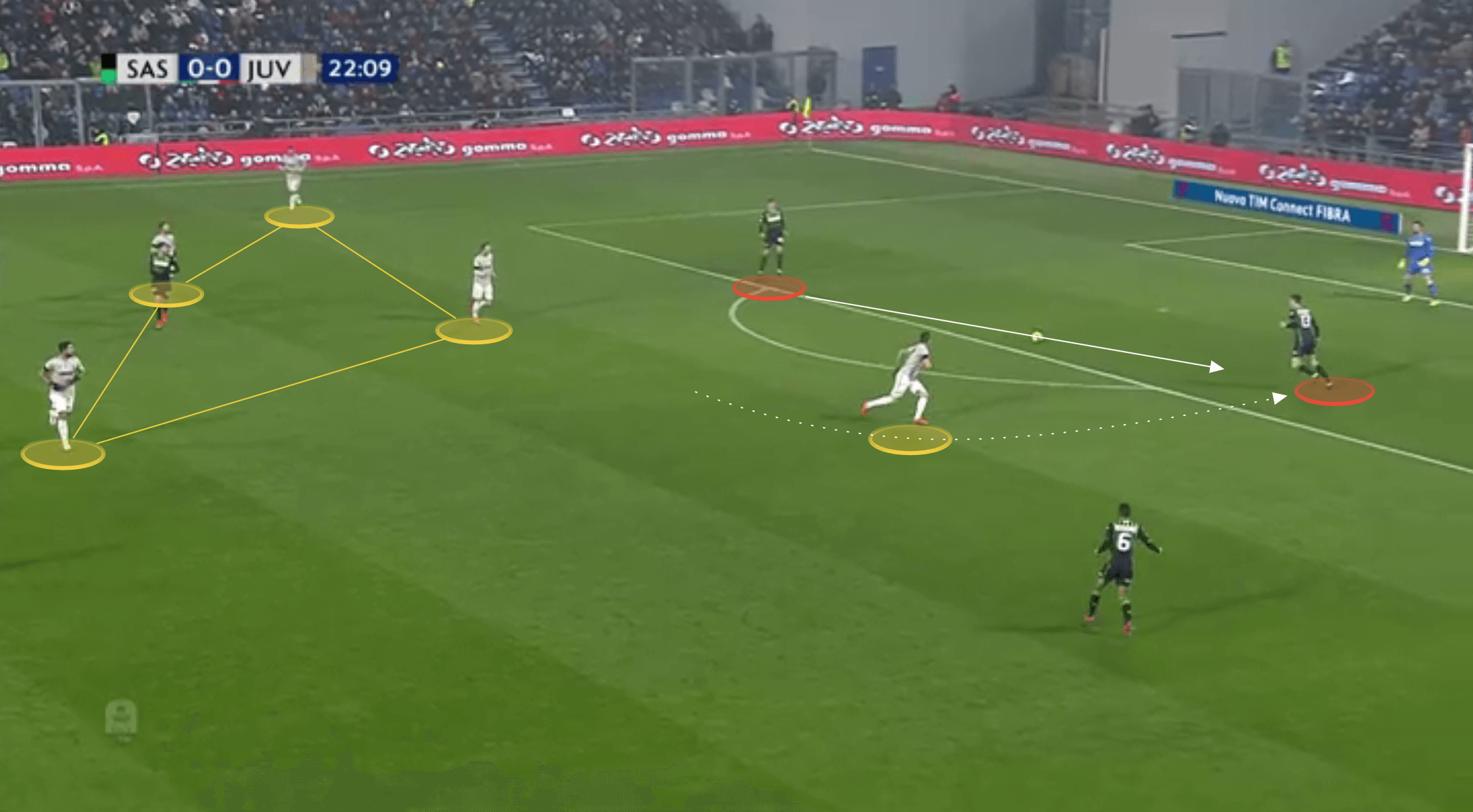
We can see this occurring in the previous image, and the result of the press in the following image, all of which led to a goal being scored by Juventus. They were able to easily outnumber the opposition in this instance as they countered after regaining possession.
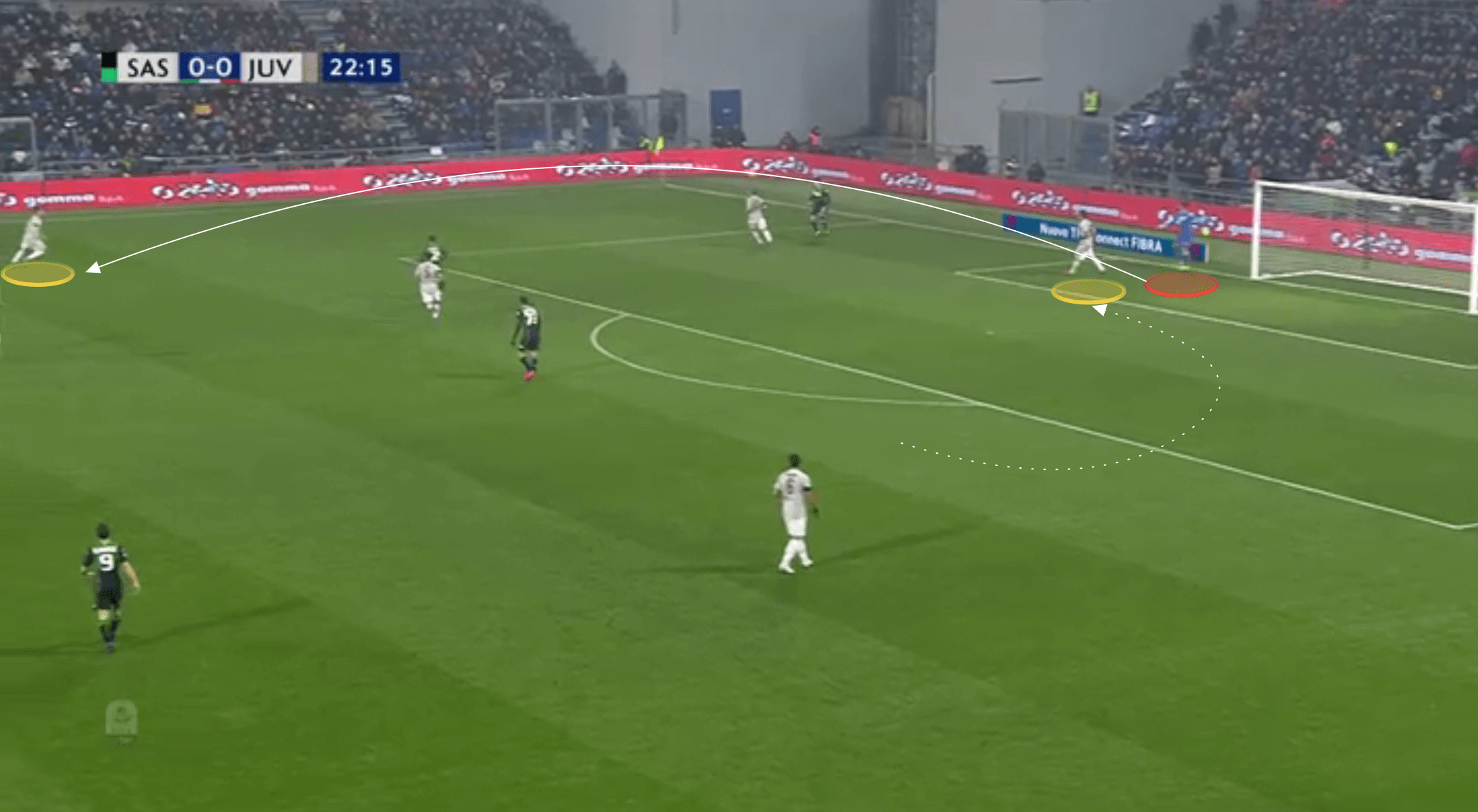
Allegri would leave a centre-forward high during the pressing phase and they would be ready for the ball to be won back in the midfield, before being moved forward quickly once more, into their path.
In the following image, as Juve’s press looked to stop Cagliari from progressing the ball down the wing, Ronaldo remained high and in the space inside of the far-side centre-back. With the opponent’s defence spreading wide as they looked to build-up, Ronaldo could easily place himself in the vast space between the two centre-backs. With the opposition pivot sitting just in front of him moving forward as the ball is played forward, this would leave the Portugeuse front man in even more space.
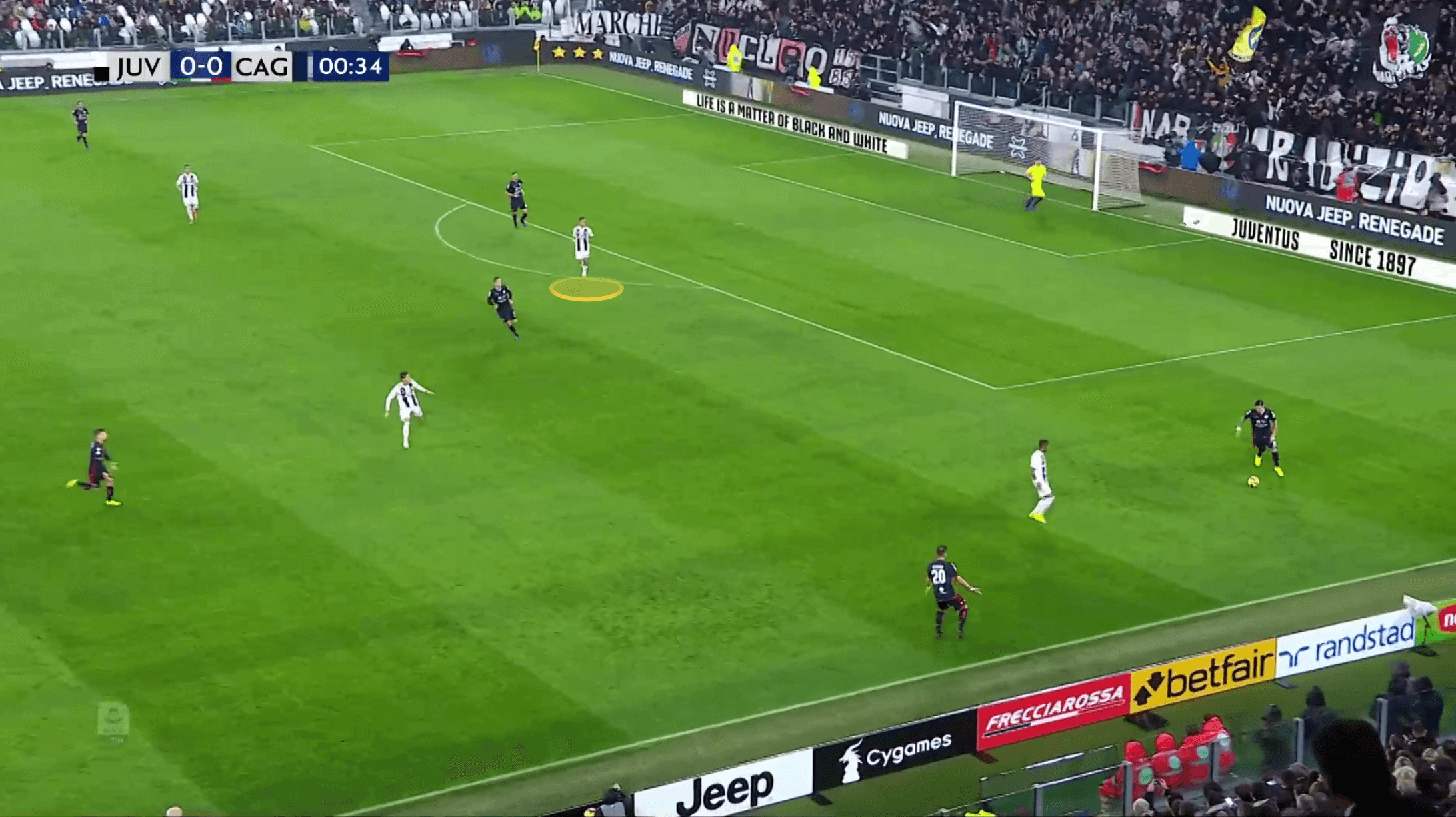
With the ball being played forward, and lost, Juventus could quickly move the ball forward after the free header won by Rodrigo Bentancur. Dybala picked up the loose ball, and Ronaldo was easy to find with a short through pass.
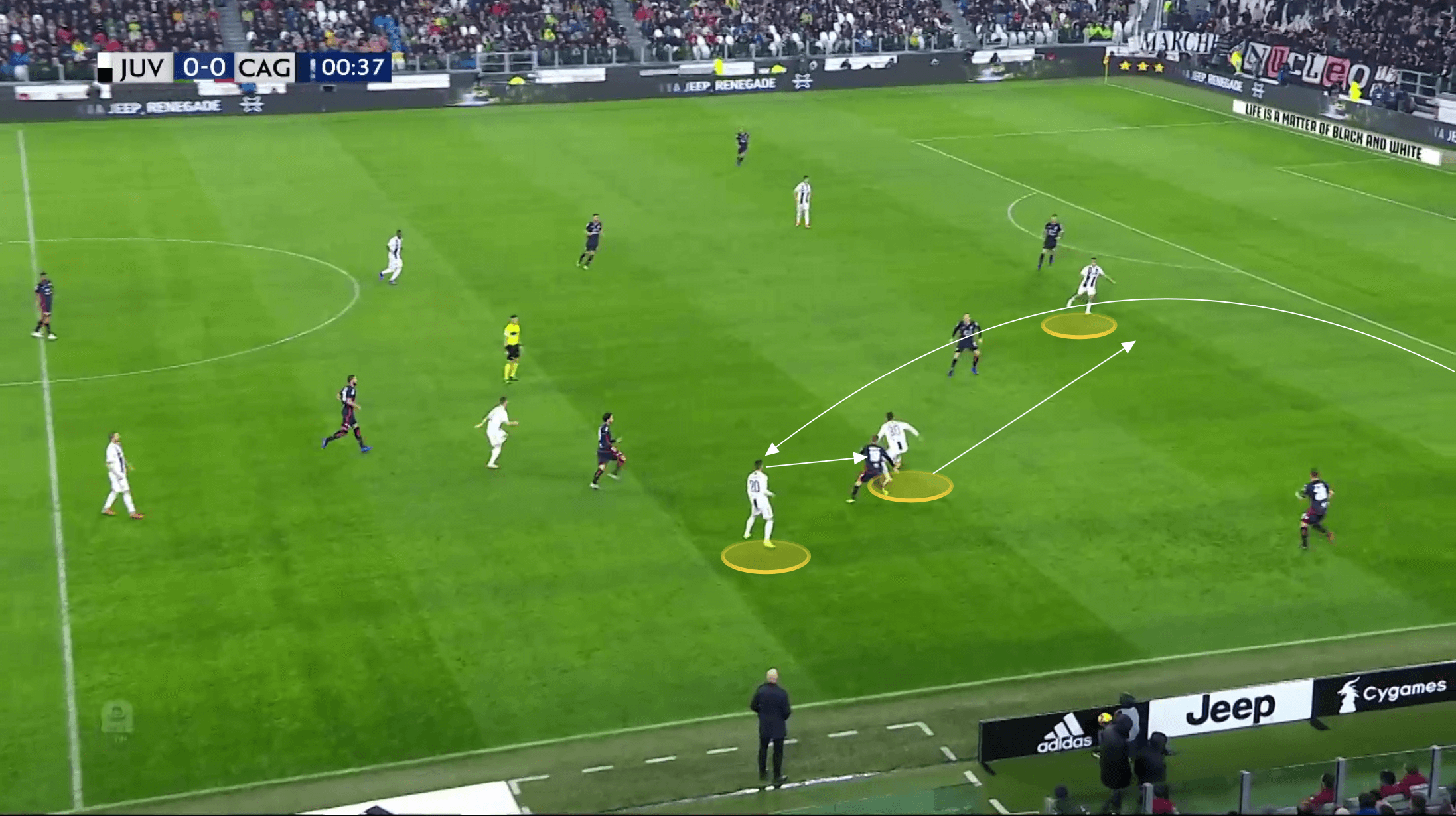
Whilst Allegri wanted to force the opponent inside, the midfield had to be ready to push out wide and push forward sharply when necessary. The midfielders had to be positionally disciplined, solid aerially, but also mobile and agile whereby they could quickly push forward to press when needed.
We can see the curved press in the following image, and this press being backed up by the central-midfielder. They are in a position where they can win a header if the ball is played forward, but they are also ready to push out wide and press the left-back if needed.
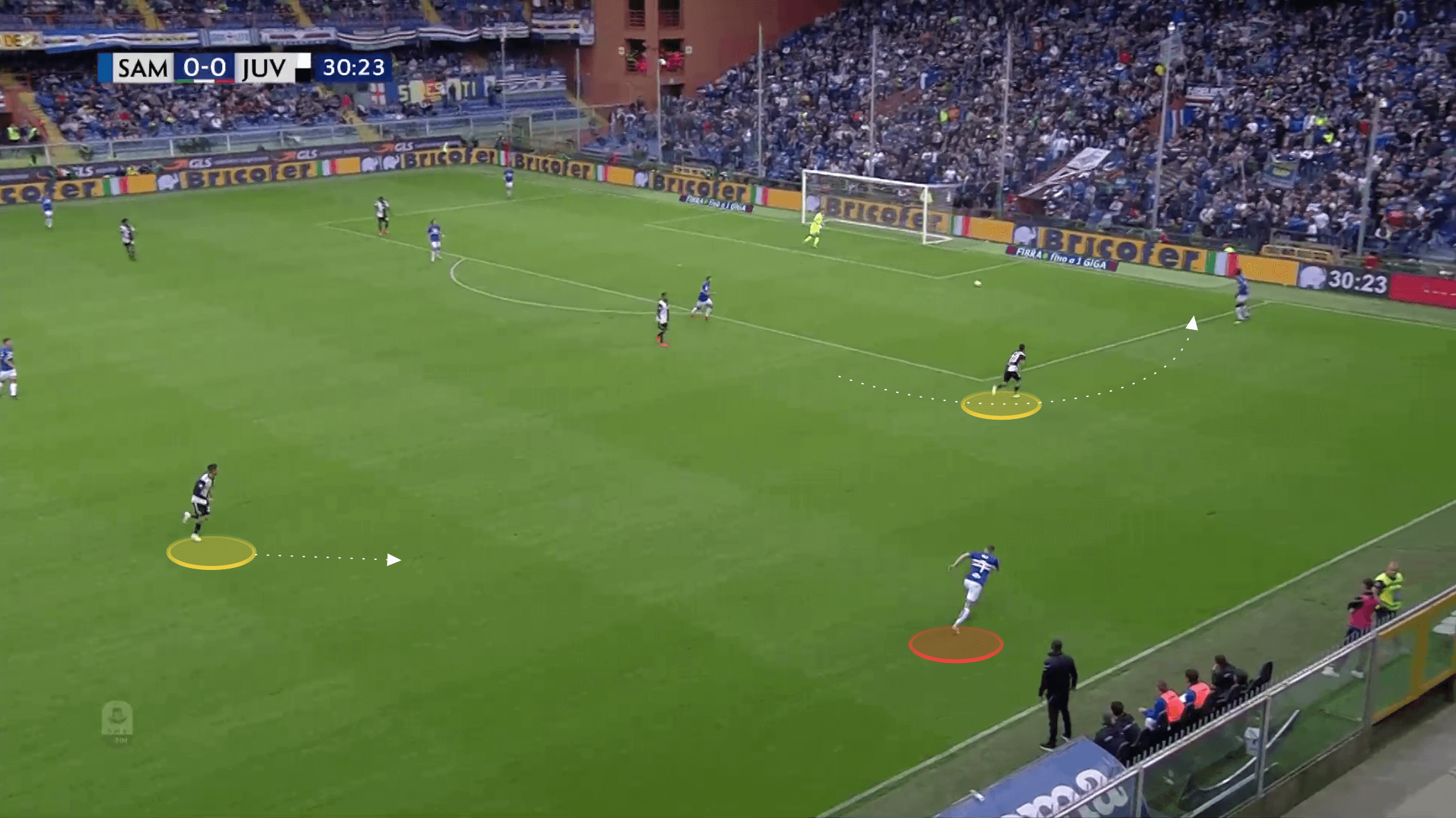
In this case, Sampdoria attempted to break the press and Juventus reacted by quickly pushing players forward, preventing forward passes to the flank or centrally. Notably, however, Allegri wanted to leave the passing line open to the goalkeeper, with his far-side centre-forward ready to press the keeper should this pass be made.
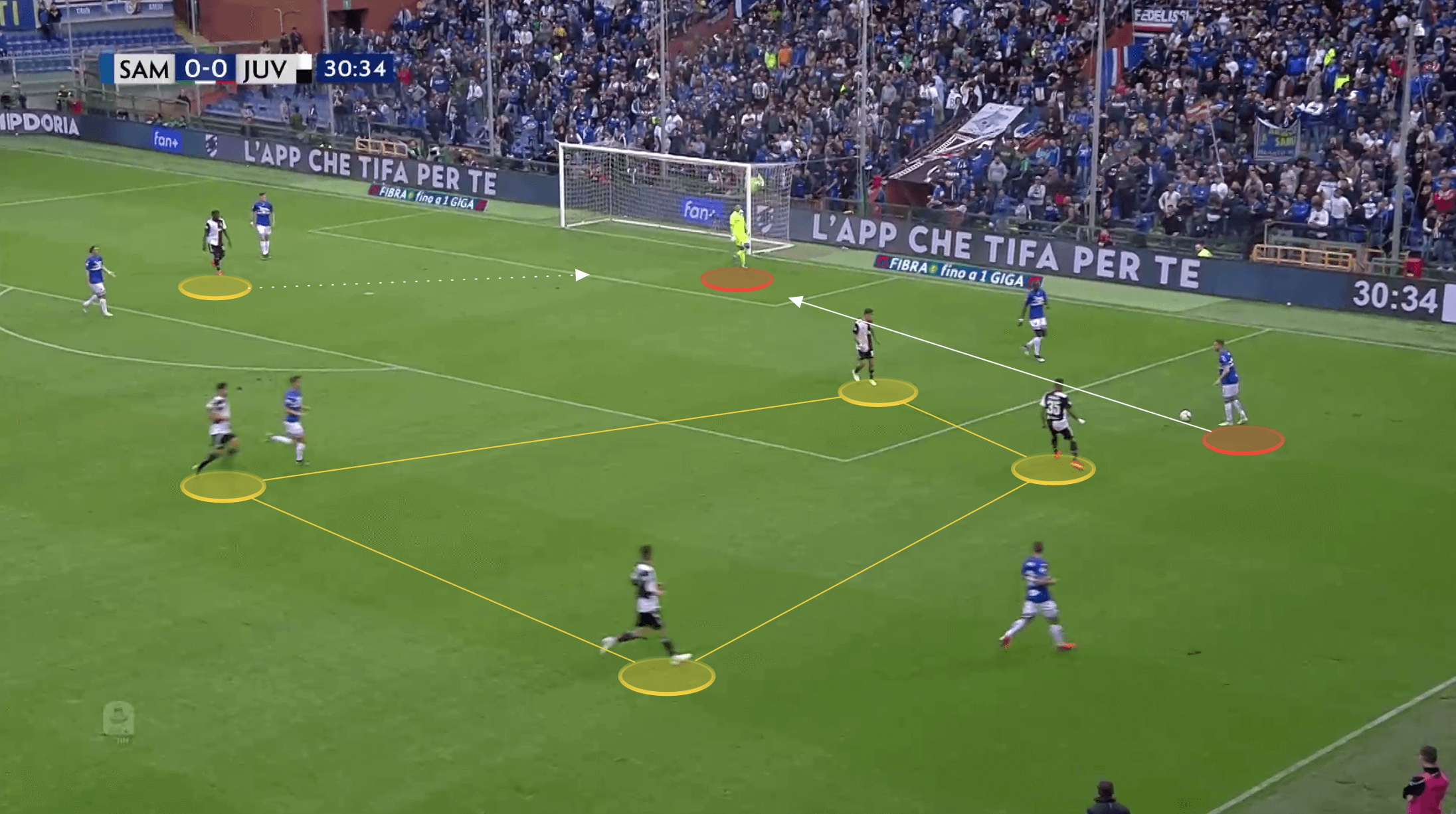
By dictating the opponent to play inside, Allegri could load the centre of the pitch. His taller central-midfielders and centre-backs would be tasked with regaining the ball should the opponent abandon any attempt to beat the press and instead play long. His pivot would be ready to claim any knockdowns from the centre-backs, and his 10 would do likewise with any knockdowns from the central-midfielders. They would be direct in playing forwards once the ball was won, but if recovered in a deeper area they wouldn’t force it, and Allegri would have his side retain possession in these instances, using longer sequences of passes to allow his attackers to get into correct positioning before resuming their attack from the back.
Conclusion
It remains to be seen exactly what kind of side Allegri will produce, until Juve’s transfer market intentions become more clear. However, we can expect a side that are tactically flexible, are ball-dominant, and swift with their forward play. Manipulation of the opposition’s positioning, and just in general looking to entirely dictate the opponent are key themes running throughout Allegri’s tactics. He looks to draw players into areas that are disadvantageous for the opposition and allow Juve to break lines with their passes and create mismatches through overloads with their possession play. Out of possession, he similarly looks to dictate where the opponent can play, and will use simple but intelligent pressing principles to even act as a playmaker, whereby Ronaldo can be found quickly on the last man once possession is regained. Whether or not Allegri is as successful as he was previously remains to be seen, however, Juventus have a man in charge where they will feel the side is in safe hands, and he is a known quantity, tactically.

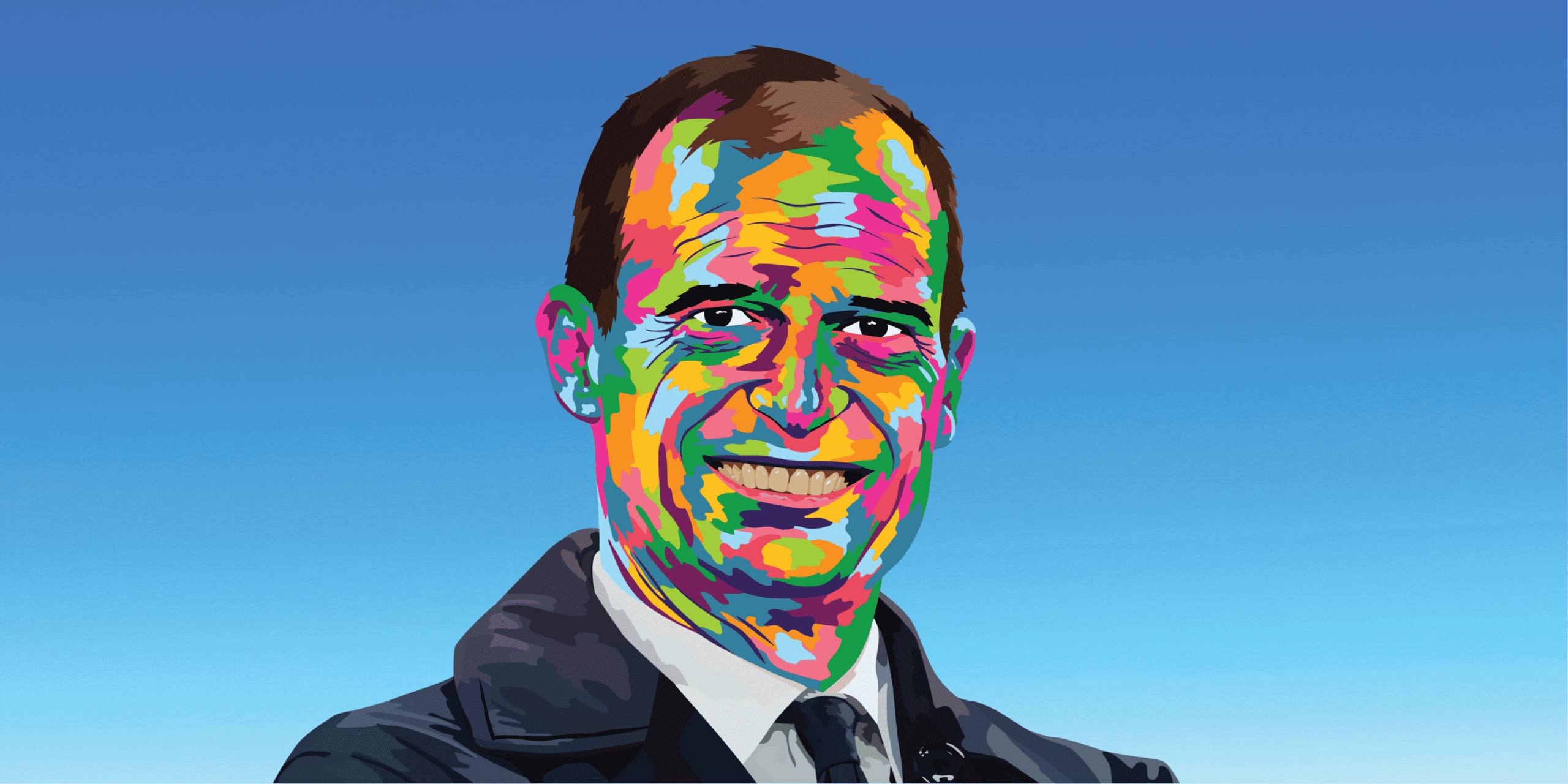



Comments